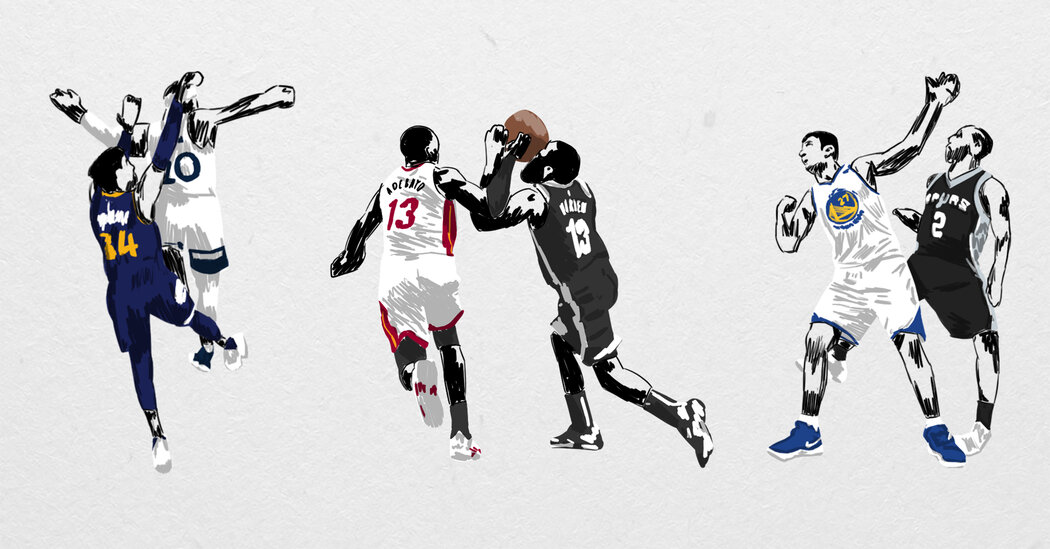
For much of the 20th century, basketball favored the tallest players, who did most of their scoring in the paint. Defenders were allowed to hand-check — to use their hands to slow driving opponents. That put guards, who were typically the shortest players, at a disadvantage. But the 1990s Chicago Bulls, led by Michael Jordan and Scottie Pippen on the perimeter, changed the calculations for the N.B.A.
By 1994, Jordan and Pippen had won three championships together, but Jordan had retired and the league was looking for of a new perimeter star to fill the void. The N.B.A. instructed officials to begin calling fouls for most types of hand-checking on the perimeter, which would make it easier for guards to score.
“Offensively, it will be great,” Pippen said at the time. “But on the defensive end, it’s going to take some getting used to. It’s not that I necessarily do it a lot — it’s just something that if you’ve done it for so long, it will be hard to remember not to do it.”
His teammate Steve Kerr added, “I don’t know how anyone is going to guard guys like Kevin Johnson or Tim Hardaway,” referring to Johnson of the Phoenix Suns and Hardaway of the Golden State Warriors, two of the league’s best guards.
The N.B.A.’s enforcement of hand-checking fouls was inconsistent. Varying levels of defensive hand use were allowed until the 2004-5 season, when the league forbade almost all restrictive contact with the offensive player.
“It had gotten so prevalent in the league that you could no longer function on ball,” McCutchen said.
Scoring went from 93.4 points a game in the 2003-4 season to 97.2 in 2004-5, likely the result of the greater emphasis on hand-checking and other rule changes that were part of a continuing shift toward favoring offensive players. The stricter enforcement of hand-checking fouls opened the door for players like Golden State’s Stephen Curry to later become dominant from 3-point range and in driving to the basket.
The less-physical style has had its critics, such as Metta Sandiford-Artest, who for almost two decades was one of the best and most physical defenders in the N.B.A.
“If you were big and strong, they were trying to take away the fact that someone could show how bigger and stronger they are,” said Sandiford-Artest, who was known as Ron Artest and Metta World Peace during his career. “So they made all the rules go against the big and strong player and they catered to the smaller and quicker player. I felt like the rules were lopsided. Because now you can hit Shaq or LeBron, but they can’t hit you back.”
Not that the rule affected him: “I’m an elite defender, so it couldn’t really change how I play,” he said.




